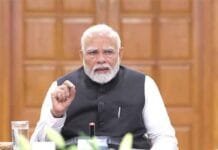The Associated Chambers of Commerce and Industry of India (ASSOCHAM) has put forward a set of strategic reforms aimed at reducing India’s import bill and enhancing domestic production. The proposal, released today, emphasizes promoting self-reliance (Atmanirbhar Bharat), improving manufacturing capacity, and reducing dependency on imports across key sectors.
With India’s import bill rising due to escalating global commodity prices and dependence on raw materials, ASSOCHAM’s recommendations aim to strengthen the domestic supply chain and support sustainable economic growth.
Key Recommendations by ASSOCHAM
Boosting Domestic Manufacturing: Encouraging local industries to expand production capabilities to meet domestic demand.
Reducing Import Dependence: Identifying critical sectors reliant on imports and promoting local alternatives.
Encouraging Innovation and R&D: Investing in research and development to improve product quality and competitiveness.
Streamlining Trade Policies: Simplifying import-export procedures to support domestic businesses.
Mr. Sunil Kanoria, President of ASSOCHAM, stated:
“India has immense potential to reduce its import dependence. By focusing on domestic production, innovation, and policy reforms, we can strengthen our economy and ensure self-reliance in key sectors.”
Economic Context
India’s import bill has been rising steadily, driven by oil, electronics, machinery, and precious metals imports. Analysts note that while imports are necessary for economic growth, excessive dependency exposes India to global market fluctuations and trade deficits.
Economic expert Dr. Priya Mehra explained:
“Reducing import dependence is not just about cost-saving; it’s about economic security. ASSOCHAM’s recommendations can help India build resilience and enhance domestic capabilities, especially in strategic sectors.”
Impact on Businesses
The proposed reforms are expected to benefit manufacturers, startups, and SMEs, creating opportunities for:
Domestic production of essential goods currently sourced from abroad.
Job creation, especially in manufacturing and technology sectors.
Improved supply chain efficiency, reducing lead times and costs.
Mr. Ramesh Agarwal, CEO of a Delhi-based manufacturing firm, said:
“These reforms, if implemented, could revolutionize domestic production. Businesses will have more incentives to invest locally, which in turn will reduce import dependency and strengthen the Indian economy.”
Government Response
While ASSOCHAM has submitted its proposals to the Ministry of Commerce and Industry, officials indicate that policy deliberations are ongoing. The government is reportedly considering tax incentives, export promotion schemes, and import substitution policies to encourage domestic manufacturing.
A senior government official, speaking anonymously, noted:
“ASSOCHAM’s recommendations align with the broader vision of Atmanirbhar Bharat. We are evaluating sector-specific strategies to implement reforms without disrupting trade flows.”
Broader Implications
Reducing import dependence can have far-reaching effects:
Trade Balance Improvement: Lower import bills will reduce pressure on the current account.
Enhanced Industrial Growth: Local manufacturing and startups will receive more focus.
Global Competitiveness: India can emerge as a key exporter of domestically produced goods.
Industry analysts believe that such reforms will strengthen India’s global economic position, especially amid volatile international markets.
Conclusion
ASSOCHAM’s proposals mark a significant step towards reducing India’s import bill and fostering domestic production. By focusing on self-reliance, innovation, and trade policy reform, India has the potential to strengthen its economy, create jobs, and enhance global competitiveness.
If implemented effectively, these reforms could transform the Indian industrial and manufacturing landscape, supporting the vision of Atmanirbhar Bharat and ensuring long-term economic stability.
As policymakers review these recommendations, businesses and investors will be closely watching the outcomes, which could reshape India’s trade and manufacturing strategy for years to come.
















